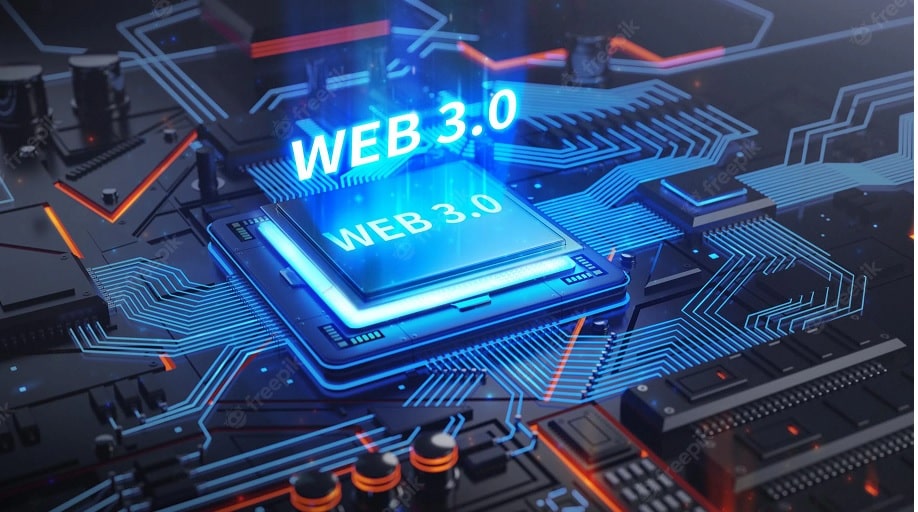The blockchain ecosystem is a dynamic environment, and so are its best development practices. The development landscape for decentralized applications (Dapps) continues to evolve rapidly, with new tools, frameworks, and standards being introduced frequently.
As blockchain developers solve common problems more efficiently, new best practices emerge. This blog post will examine some of the most important best practices for Dapp development and Web3 technologies. Reading about these principles could speed up your Web3 dApp development or help you identify new opportunities in abandoned projects.

Know your Environment
Understanding how different technologies interact is essential for effective Dapp development. You must comprehend the ERC-20 standard and the functionality of the Metamask browser extension for Ethereum. You must be able to write an Ethereum smart contract, integrate a front-end application with the contract, and deploy the project to IPFS or Swarm. Understanding gas fees and the consequences of not paying them can save you time and effort.
There is no need to reinvent the wheel if it has already been created. When constructing your decentralized application, you may need to use or write your implementations of the most popular protocols, such as HTTP, JSON, and IOTA. Understanding the implementation of these protocols will assist you in identifying the best implementation practices.
Don’t Reinvent the Wheel
The blockchain ecosystem is a fantastic place to discover code that can be reused, such as open-source smart contracts and libraries. As the decentralized web is a relatively new technology, many programmers are still writing new code. This indicates an abundance of existing code available for your use.
Even if you must write new code, you can look to the best practices of other decentralized app developers in your space for inspiration. The DappHub network, for instance, hosts open-source code for numerous decentralized applications. Multiple code repositories exist for open-source apps on platforms such as Github.
Use Events, Not Requests
To decouple front-end and back-end applications, you can communicate with the smart contract using events instead of requests. You can publish an event when significant changes occur, such as a smart contract receiving a transaction or a user manually modifying settings. Then, you can subscribe to these events in the front-end application and change the interface accordingly.
And because communication between the front end and the smart contract is accomplished via events, you can later implement a completely different interface or select another technology stack. This is especially useful when designing a wallet for your decentralized application. There are numerous ways to implement a wallet, but using events rather than requests will help you achieve separation of concerns and make your purse extendable.
Keep it Simple
You should focus on creating a simple solution from the outset. It is unnecessary to over-engineer a decentralized application, particularly if it is a proof-of-concept. Dapp development is different from Web3 development. For instance, you do not need a database to store data, and most Dapp users will not notice if you cannot edit or delete existing records. You can create a fully-featured user interface without making it. A simple user interface that assists prospective users in comprehending your product and interacting with your smart contract may suffice.
Ethereum is not Evil (at least for now)
As previously mentioned, decentralization has both advantages and disadvantages. To create a decentralized application, you must make some sacrifices. You cannot always control, for instance, the data stored on a blockchain. Understanding that you cannot delete or alter the data is essential. This implies that you must design your application with care.
You can only sometimes rely on the information you receive. Some decentralized applications are susceptible to manipulation by their developers; therefore, you must be able to recognize and disregard false information. Keep in mind that blockchain technology is still in its infancy. Some unresolved issues are scalability, low adoption rates, and low transaction fees. You should expect decentralized applications to possess a different level of trust and dependability than centralized platforms.
Solidity is a Language for Humans — Don’t Forget It
Writing an intelligent contract from scratch is difficult and costly. Most Dapp developers will simply copy and paste a smart contract written by someone else before attempting to modify it to their specifications. However, if you wish to create a fully autonomous application, you will eventually need to write your smart contract.
This necessitates proficiency in Solidity, the most popular programming language for smart contracts. Numerous blog posts and books can teach you how to write Solidity code. This implies that you should wait to attempt to create a highly complex application.
Build with Solidity and Typescript Together
Various tools and frameworks are available to help you develop a decentralized application. You can select and integrate the most appropriate technology stack for your project. This indicates that Typescript, the most popular typed superset of JavaScript, can be used to write front-end code.
When developing decentralized applications, Typescript offers numerous benefits: Using Typescript, for instance, it is simple to build a wallet or wallet manager. There is no need to develop your implementation of the standard protocols for communication between the front end and the smart contract. In addition, there are Typescript libraries that provide a high-level interface for working with specific decentralized applications, such as the Augur decentralized oracle and the Oracles Network. This means that multiple decentralized applications can be accessed through a single interface.
Conclusion
The blockchain ecosystem is a dynamic environment, and so are its best development practices. The Web3 development landscape for decentralized applications (Dapps) continues to evolve rapidly, with new tools, frameworks, and standards being introduced frequently.
As blockchain developers solve common problems more efficiently, new best practices emerge. The key to success in this new world is staying current with industry news and trends. Understanding your surroundings and other developers’ actions is essential for effective web3 Dapp development. Remember to keep things straightforward, and Ethereum is not evil. Finally, construct with Solidity and Typescript.